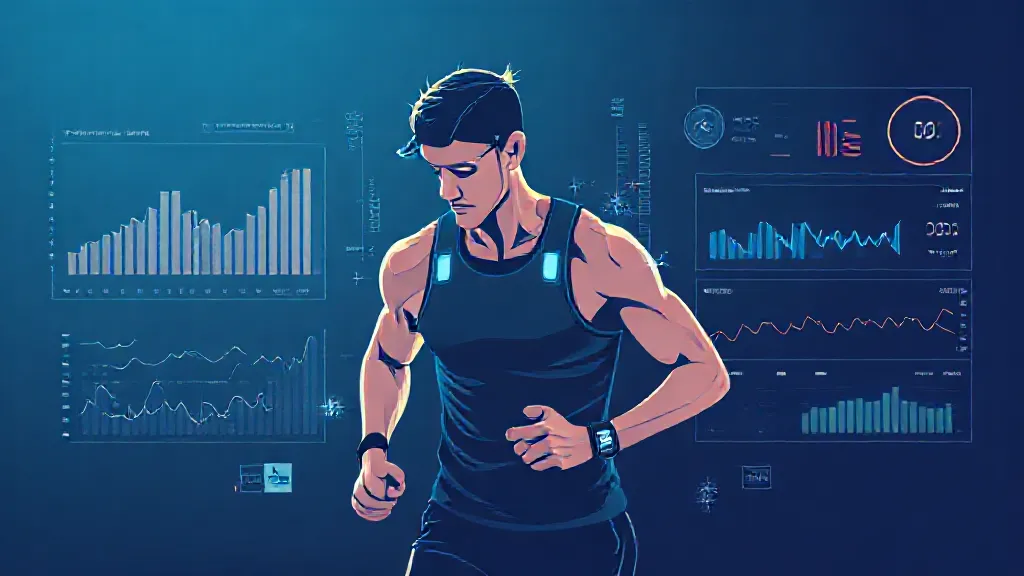In the modern era, technology has become an integral part of athletic training and performance enhancement. Athletes across various sports are now leveraging cutting-edge tools and devices to refine their skills, monitor their physical condition, and gain a competitive edge. This article delves into the myriad ways technology is being utilized by athletes to enhance their skills, improve performance, and revolutionize training methods.
Wearable Technology: The Athlete's Best Friend
Wearable technology, including smartwatches, fitness trackers, and heart rate monitors, has transformed how athletes train. These devices provide real-time data on an athlete's heart rate, calories burned, distance covered, and even sleep patterns. For instance, a professional runner might use a GPS-enabled watch to analyze their pace and distance, allowing them to make data-driven decisions about their training regimen.
Furthermore, wearables can track recovery times and help athletes avoid overtraining, ultimately leading to improved performance.
Video Analysis: Learning from Every Angle
Video analysis has become a staple in sports training, enabling athletes to review their techniques and performance from multiple perspectives. Coaches and athletes can record training sessions and competitions, then analyze the footage to identify areas for improvement.
For example, a basketball player might study their shooting form or footwork using slow-motion replay, allowing them to make precise adjustments. This method not only enhances skill development but also boosts an athlete's confidence as they see tangible progress.
Virtual Reality: Immersive Training Experiences
Virtual reality (VR) is emerging as a revolutionary tool in athletic training, offering immersive experiences that can simulate real-game scenarios.
Athletes can practice their skills in a controlled environment, allowing them to react to various situations without the physical strain of traditional training. For instance, a football quarterback can use VR to simulate reading defenses and making split-second decisions, honing their mental acuity and reaction time. This technology provides a unique advantage, especially in high-stakes sports where mental preparedness is crucial.
Data Analytics: The Science of Performance
Data analytics plays a pivotal role in modern sports, allowing teams and athletes to make informed decisions based on extensive performance data. By analyzing metrics such as player efficiency ratings, shot accuracy, and movement patterns, coaches can tailor training programs to address specific weaknesses. For example, a soccer coach might analyze a player's passing accuracy and suggest targeted drills to improve their performance in that area.
This data-driven approach not only enhances individual skills but also contributes to overall team strategy.
Biomechanics: Understanding Movement for Better Performance
Biomechanics is the study of movement and how the body functions during physical activity. Athletes can utilize biomechanical analysis to optimize their movements, reduce the risk of injury, and enhance performance.
Motion capture technology allows for detailed analysis of an athlete's biomechanics, providing insights into their technique. For example, a swimmer might undergo a biomechanics assessment to refine their stroke efficiency, leading to faster lap times. Understanding the mechanics of their movements empowers athletes to train smarter and more effectively.
Social Media and Online Platforms: Community and Learning
The rise of social media and online platforms has created a global community for athletes to share knowledge, training tips, and experiences. Athletes can connect with peers, coaches, and experts, gaining insights into different training methodologies and techniques. For instance, a gymnast might follow elite athletes on Instagram to learn new routines or exercises.
This exchange of information fosters a culture of continuous learning and improvement, motivating athletes to push their boundaries.
Nutrition Technology: Fueling Performance
Nutrition is a critical aspect of athletic performance, and technology has made it easier for athletes to monitor their dietary habits. Apps and devices that track caloric intake, macronutrient ratios, and hydration levels enable athletes to optimize their nutrition for peak performance.
For example, a cyclist might use a nutrition app to ensure they are consuming the right balance of carbohydrates and proteins before a race, enhancing their endurance and recovery. Understanding the science of nutrition empowers athletes to fuel their bodies effectively.
The Future of Technology in Sports
As technology continues to evolve, the future of athletic training and performance enhancement looks promising.
Innovations such as artificial intelligence, machine learning, and advanced biomechanics are set to further revolutionize how athletes train and compete. The integration of these technologies will likely lead to more personalized training programs, enhanced recovery methods, and improved injury prevention strategies. Athletes who embrace these advancements will undoubtedly gain a competitive edge in their respective sports.
In conclusion, technology offers a vast array of tools and resources for athletes looking to enhance their skills and performance. From wearables and video analysis to VR training and data analytics, the possibilities are endless. By leveraging these technologies, athletes can train smarter, recover faster, and ultimately achieve their goals more effectively.
The intersection of sports and technology is a dynamic field that continues to evolve, promising exciting developments for the future of athletics.
